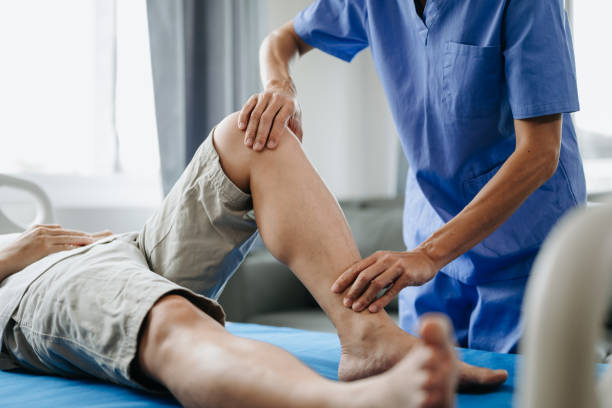Introduction
Sports medicine plays a crucial role in enhancing athletic performance, preventing injuries, and facilitating recovery. It encompasses a wide range of practices and treatments designed to help athletes maintain optimal health and achieve their best performance. This article delves into the significance of SM, exploring its various components and how it benefits athletes.
What is Sports Medicine?
Definition and Scope
Sports medicine is a branch of SM that focuses on physical fitness, treatment, and prevention of injuries related to SM and exercise. It involves a multidisciplinary approach, including physicians, physical therapists, athletic trainers, and other healthcare professionals working together to support athletes.
Key Areas of Sports Medicine
- Injury Prevention: Developing strategies and training programs to prevent injuries.
- Diagnosis and Treatment: Accurate diagnosis and effective treatment of sports-related injuries.
- Rehabilitation: Providing appropriate rehabilitation programs to ensure complete recovery.
- Performance Enhancement: Implementing techniques to improve athletic performance through physical conditioning and nutrition.
Benefits of Sports Medicine
Injury Prevention
Preventing injuries is a primary goal of SM. By understanding the biomechanics of sports and the specific demands of each activity, SM professionals can design training programs that minimize the risk of injury. This includes proper warm-up routines, strength training, and flexibility exercises.
Accurate Diagnosis and Treatment
When injuries occur, timely and accurate diagnosis is critical. SM physicians use advanced diagnostic tools to identify the nature and extent of injuries. Treatment plans are then tailored to the individual’s needs, ensuring a faster and more effective recovery.
Rehabilitation and Recovery
Rehabilitation is a vital aspect of SM, focusing on restoring function and strength after an injury. Customized rehabilitation programs help athletes regain their physical capabilities, reduce pain, and prevent future injuries. This process often involves physical therapy, exercises, and sometimes surgical interventions.
Performance Enhancement
Sports medicine is not just about treating injuries; it’s also about optimizing performance. By analyzing an athlete’s physical condition and training regimen, SM professionals can recommend adjustments and improvements. This might include nutritional advice, strength and conditioning programs, and mental health support.
Common Sports Injuries and Treatments
Sprains and Strains
Sprains and strains are common injuries in sports, often affecting ligaments and muscles. Treatment typically involves rest, ice, compression, and elevation (RICE), along with physical therapy to restore function.
Fractures
Fractures or broken bones require immediate medical attention. Treatment may involve immobilization with casts or braces and, in severe cases, surgical intervention. Rehabilitation is crucial to regain strength and mobility.
Tendonitis
Tendonitis, an inflammation of the tendons, is often caused by overuse. Treatment includes rest, anti-inflammatory medications, physical therapy, and sometimes corticosteroid injections.
Dislocations
Dislocations occur when bones are forced out of their normal position. Immediate medical attention is necessary to reposition the bones. Rehabilitation focuses on restoring strength and stability to prevent recurrence.
Concussions
Concussions are a serious concern in contact sports. Proper diagnosis and a graduated return-to-play protocol are essential to ensure full recovery and prevent long-term effects.
Role of Sports Medicine Professionals
Sports Medicine Physicians
Sports medicine physicians specialize in diagnosing and treating sports-related injuries. They develop comprehensive treatment plans that include medical interventions, physical therapy, and lifestyle modifications.
Physical Therapists
Physical therapists play a key role in rehabilitation, designing exercises and treatment plans to help athletes recover from injuries and improve their physical condition.
Athletic Trainers
Athletic trainers work closely with athletes to prevent injuries and provide immediate care when injuries occur. They also assist in the development of training programs and rehabilitation exercises.
Nutritionists and Dietitians
Proper nutrition is vital for athletic performance and recovery. Nutritionists and dietitians provide dietary advice tailored to the specific needs of athletes, helping them maintain optimal health and performance.
Advances in Sports Medicine
Technology and Innovation
Advances in technology have significantly impacted SM. Techniques such as MRI and ultrasound allow for more accurate diagnosis of injuries. Wearable technology and data analytics provide insights into performance and injury prevention.
Regenerative Medicine
Regenerative medicine, including treatments like platelet-rich plasma (PRP) and stem cell therapy, is becoming increasingly popular in sports medicine. These treatments promote healing and recovery by harnessing the body’s natural repair mechanisms.
Biomechanics and Movement Analysis
Understanding the biomechanics of movement helps SM professionals design better training programs and prevent injuries. Motion capture technology and biomechanical analysis provide detailed insights into an athlete’s movements.
Conclusion
Sports medicine is an essential field that supports athletes in achieving peak performance, preventing injuries, and ensuring a swift recovery when injuries occur. With the help of SM professionals, athletes can maintain their physical health, enhance their performance, and enjoy a longer, more successful career in SM.
FAQs
1. What is the role of a sports medicine physician?
A sports medicine physician specializes in diagnosing and treating SM-related injuries, developing treatment plans, and working with other healthcare professionals to support an athlete’s recovery and performance.
2. How can sports medicine help prevent injuries?
Sports medicine helps prevent injuries by designing training programs that include proper warm-up routines, strength training, and flexibility exercises, and by educating athletes on safe practices.
3. What are some common treatments in sports medicine?
Common treatments in sports medicine include physical therapy, RICE (rest, ice, compression, elevation), anti-inflammatory medications, and in some cases, surgical interventions and regenerative medicine.
4. How does nutrition impact athletic performance?
Proper nutrition provides the necessary fuel and nutrients for workouts, aids in recovery, and supports overall health, which is crucial for optimal athletic performance.
5. What advancements have been made in sports medicine?
Advancements in sports medicine include the use of MRI and ultrasound for accurate diagnosis, wearable technology for performance monitoring, and regenerative treatments like PRP and stem cell therapy.

